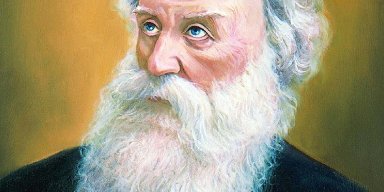In the eight years that Rabbi Natan spent with Rabbi Nachman, he not only went through a spiritual transformation on a personal level, but enabled future generations to see and appreciate his experiences. Rabbi Nachman would take him along on trips to distant places, as well as wander the hills around the city of Breslov, revealing his visions, his hopes for each individual, and the world.Rabbi Nachman revealed many awesome teachings, some public, some private, and some that were to be kept secret among his followers. On the one hand, Rabbi Nachman seemed pessimistic, but it was, ironically, a pessimism with a huge degree of optimism."Heresy and atheism are coming into the world. A time is coming when a simple Jew who washes his hands before eating (a requirement of Jewish law) will be as unique as the Baal Shem Tov!" His students were astounded. "Maybe we shouldn't have children?" He answered "No, you do your part. When the Messiah comes, everyone and everything will be rectified". He saw the War of Gog and Magog as not a military struggle, but a spiritual, ideological struggle, to maintain faith and hope in the face of hostility and negativity. What of the all pervasive anti-semitism that Jews faced? The Messiah would be able to do nothing until reconciliation took place between the Jews and the Nations! (This was a very radical idea!). The world, in fact, was always approaching perfection. One had to know how to read between the lines of events.At age 35, Rabbi Nachman contracted tuberculosis. He was told that he had a few months to live. But he lived more than three years. During this time, he remained joyful, assuring his followers that he was not leaving them, bot only entering a "different room". On the contrary, he would be able to do more when free of the physical body! ("It's time to take this shirt off".) During this time, he began to tell stories. But not ordinary stories. They sound like "fairy tales", replete with Kings, Queens, Princesses, Pirates. There are 13 main stories, plus a host of more minor ones. They are allegories of life, on the personal and cosmic levels. They speak of birth, death, restoration. Most begin with an ideal situation, destroyed by some cataclysm, and finally working out to a greater perfection than had been previously known. Buber called them "a literary genre all their own". Others compare them to the writings of Kafka, who was apparently deeply influenced by Rabbi Nachman. Although he gave hints as to their meaning, he stressed that "entire worlds" were hidden in each word.He quipped "People say that stories put you to sleep. Mine wake you up. People say, you can't become pregnant from a story. From mine, you do!". He instructed Rabbi Natan to publish the stories together with a translation into the Yiddish vernacular, so that a barren woman would be able to read them and become pregnant!. I actually saw this in my own family, But that is a story for another day.In Rabbi Nachman's time, the visit with a Tzaddik had become a ritual. One would enter his study, hand him a note with one's requests, and receive a blessing. So it remains in most Chassidic groups.Not Rabbi Nachman! One would enter his study. He would say "Heint, Zog!" (Now start talking"). The person would tell his life story, from his earliest memories, including all his successes and failures. Many derided this, calling his followers "Viduinikers" (confessors). But people who did so, felt their life story changing before their eyes! People would come in bowed with sorrow, but go out standing upright, ready to begin anew!
As I have previously noted, he wanted to be buried in Uman, near the martyrs of 1768. In early 1810, a fire broke out in Breslov, one from which it never recovered. He was forced to leave his home in the middle of the night. The following day, a messenger came from Uman with a letter from the heads of the town offering him a home among them. He turned pale."Shoyn!" (Already!) He was being called to his death. He lived in Uman another six months. There were several major heretics in Uman, who had made a pact never to mention G-d! Rabbi Nachman mysteriously befriended them, and spent many hours playing chess with them! This added to the mystery, and to the opposition. But he didn't care! One of his students asked "Rabbi, what do you have to do with THEM?!?!" He answered "And what do I have to do with you?!?!" His message was for all; devout or not, Jewish or not! "Everyone needs me, even the other Chassidic leaders. Everyone needs me, even the Gentiles!" At his last Rosh HaShannah, two weeks before his death at age 38 (just like the Ari), he gave a long, two hour teaching about remaining happy and hopeful, engaging always in heartfelt prayer, and staying close with friends. He would still be there. He died on the fourth day of the Sukkot festival, and was buried the next day, at the very spot he had chosen years before. Miraculous events are reported from his funeral. His burial place has been a site for pilgrimage ever since. But what now? How could his followers, especially Rabbi Natan, who was connected with his teacher heart and soul, go on? What does anyone do who has lost the focus of his life? That will be the next part of the story!
As I have previously noted, he wanted to be buried in Uman, near the martyrs of 1768. In early 1810, a fire broke out in Breslov, one from which it never recovered. He was forced to leave his home in the middle of the night. The following day, a messenger came from Uman with a letter from the heads of the town offering him a home among them. He turned pale."Shoyn!" (Already!) He was being called to his death. He lived in Uman another six months. There were several major heretics in Uman, who had made a pact never to mention G-d! Rabbi Nachman mysteriously befriended them, and spent many hours playing chess with them! This added to the mystery, and to the opposition. But he didn't care! One of his students asked "Rabbi, what do you have to do with THEM?!?!" He answered "And what do I have to do with you?!?!" His message was for all; devout or not, Jewish or not! "Everyone needs me, even the other Chassidic leaders. Everyone needs me, even the Gentiles!" At his last Rosh HaShannah, two weeks before his death at age 38 (just like the Ari), he gave a long, two hour teaching about remaining happy and hopeful, engaging always in heartfelt prayer, and staying close with friends. He would still be there. He died on the fourth day of the Sukkot festival, and was buried the next day, at the very spot he had chosen years before. Miraculous events are reported from his funeral. His burial place has been a site for pilgrimage ever since. But what now? How could his followers, especially Rabbi Natan, who was connected with his teacher heart and soul, go on? What does anyone do who has lost the focus of his life? That will be the next part of the story!












